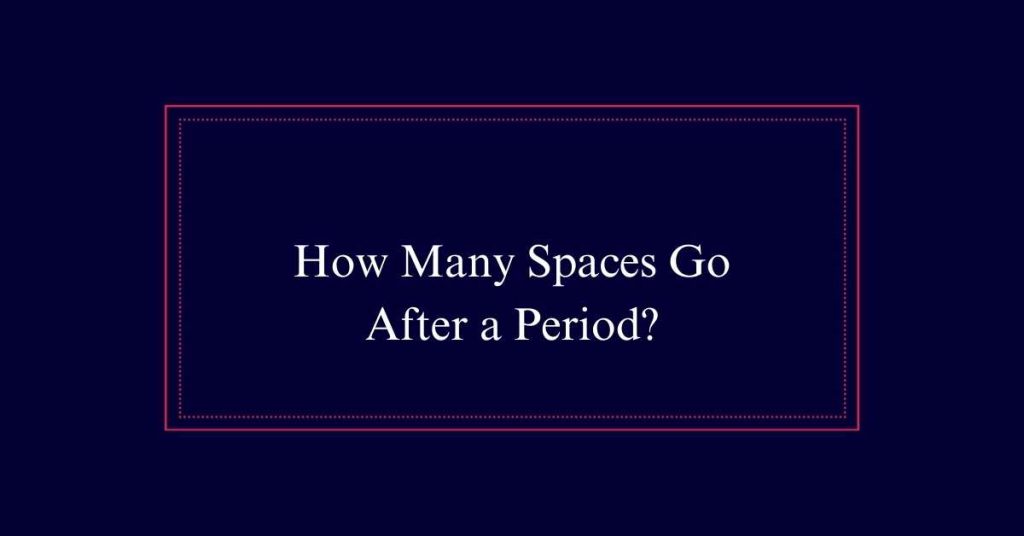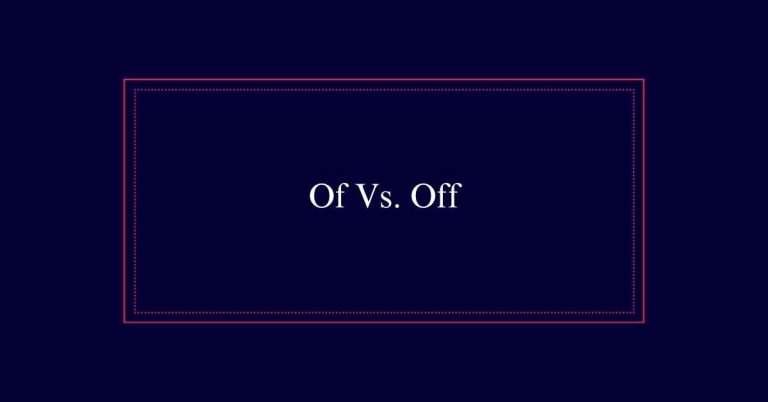How Many Spaces Go After a Period?
Modern style guides and digital writing standards recommend using a single space after a period. This shift reflects the evolution from typewriters, which required double spacing for clarity, to digital text, which benefits from single spacing for uniformity.
Major guides like the Chicago Manual of Style, APA, and AP advocate for one space to enhance readability and professionalism. Microsoft Word’s 2020 update also flags double spaces as errors, underscoring this standard. While some style guides like MLA may allow teacher preferences, using one space is widely accepted.
The Space Debate
The debate over whether to use one space or two spaces after a period has been a contentious issue among writers and editors for decades.
This discussion dates back to the era of typewriters, where two spaces were used for visual clarity. The advent of computers and proportionally spaced fonts changed this norm.
Modern style guides like The Chicago Manual of Style and the APA now recommend using one space after a period. The Associated Press Stylebook also endorses this practice.
Despite these guidelines, some people still prefer two spaces for personal or instructional reasons.
Microsoft’s 2020 Decision
In 2020, Microsoft officially endorsed the use of a single space after a period. This decision aligned with the growing consensus among major style guides and modern writing practices.
Microsoft’s endorsement was part of an update to its widely-used word processing software, Microsoft Word. The software began flagging two spaces after a period as an error, prompting users to adopt the single-space practice. This change aimed to standardize writing formats and enhance readability.
The shift also reflected the move from typewriter-based habits to digital text formatting. By endorsing a single space, Microsoft contributed to streamlining written communication, making documents appear more uniform and professional.

Style Guides Recommendations
Microsoft’s endorsement of a single space aligns with recommendations from major style guides like The Chicago Manual of Style, APA, and the Associated Press Stylebook. These guides advocate for one space after a period to guarantee consistency and readability in modern writing.
The Chicago Manual of Style states that one space is sufficient for clarity. APA emphasizes that using one space after a period helps maintain uniformity in manuscripts. The Associated Press Stylebook also supports the single-space rule, noting that it enhances readability for digital and print media.
MLA Guide Preferences
While other major style guides have clear rules, the MLA guide suggests adhering to the teacher’s preference regarding spaces after a period. This approach allows for flexibility in academic settings.
The MLA Handbook does not strictly enforce one or two spaces, instead emphasizing consistency. If no specific instructions are given, using one space is generally a safer choice. This aligns with modern typographic practices and readability standards.
However, if a teacher or institution prefers two spaces, students should follow that direction. The key takeaway is to prioritize clarity and uniformity according to the given guidelines. Always check with your instructor to make sure your formatting meets their expectations.
Associated Press Guidelines
The Associated Press Stylebook recommends using a single space after a period. This guideline aligns with modern typographic practices and promotes consistency across various forms of media.
The AP Stylebook is a widely respected resource for journalists and writers, providing clear rules to follow. Using a single space enhances readability and upholds a professional appearance in written content.
This recommendation is part of a broader trend towards simplified and streamlined text formatting. The AP’s endorsement of one space after a period reflects the evolution of writing in the digital age. It adapts to current technologies, where proportional fonts make double spaces unnecessary.
One Space Standard
Adopting a single space after a period has become the norm in contemporary writing practices. Major style guides, including The Chicago Manual of Style and the APA, recommend this approach. Microsoft further solidified the debate in 2020 by declaring one space as correct.
Single spacing promotes consistency and aligns with modern typesetting. It also enhances readability and reduces unnecessary white space. The MLA guide suggests following an instructor’s preference, but one space is the default if no guidance is given. The Associated Press Stylebook also advocates for a single space.
Two Spaces as Choice
Some writers and editors still prefer using two spaces after a period for visual clarity. This practice, though less common today, originates from the typewriter era. Advocates argue that it makes reading easier by clearly marking the end of a sentence. This can be especially useful in long documents where readability is essential.
Those who favor two spaces often cite:
- Nostalgia: A nod to traditional typing practices.
- Clarity: Enhanced separation between sentences.
- Consistency: Uniformity in documents with mixed spacing habits.
Examples of One Space
While some still prefer the two-space method for clarity, using one space after a period is now the widely accepted standard. Modern style guides, such as The Chicago Manual of Style and the APA, endorse this approach.
For example, consider the sentence: ‘I told my friend that I wanted to go to England in the spring.’ The single space after the period guarantees the text to flow naturally and uniformly.
Another example: ‘The report concluded with significant findings.’ In both cases, the use of one space guarantees clear and professional presentation.
Examples of Two Spaces
Many traditionalists argue that two spaces after a period enhance readability and visual separation between sentences. They believe this practice makes text clearer and easier to read, especially in lengthy documents.
Here are some examples to illustrate:
- ‘Many students love the author Zora Neale Hurston. Her books are widely read.’
- ‘The project deadline is approaching. We need to finalize our tasks soon.’
- ‘He traveled to Japan last year. It was an unforgettable experience.’
Using two spaces can create a distinct visual break, which some find helpful. However, modern style guides favor one space, and readers are generally accustomed to this format.
Origins of the Rule
The one-space versus two-space rule originated with the use of typewriters for enhancing visual clarity. Typewriters used monospaced fonts, where each character occupied the same amount of space. This made it difficult to distinguish the end of one sentence from the beginning of the next.
To address this, typists began using two spaces after periods to create a clearer visual separation between sentences.
With the advent of computers and proportionally spaced fonts, this practice became outdated. Modern fonts adjust the space between characters more effectively, making double spacing unnecessary.







